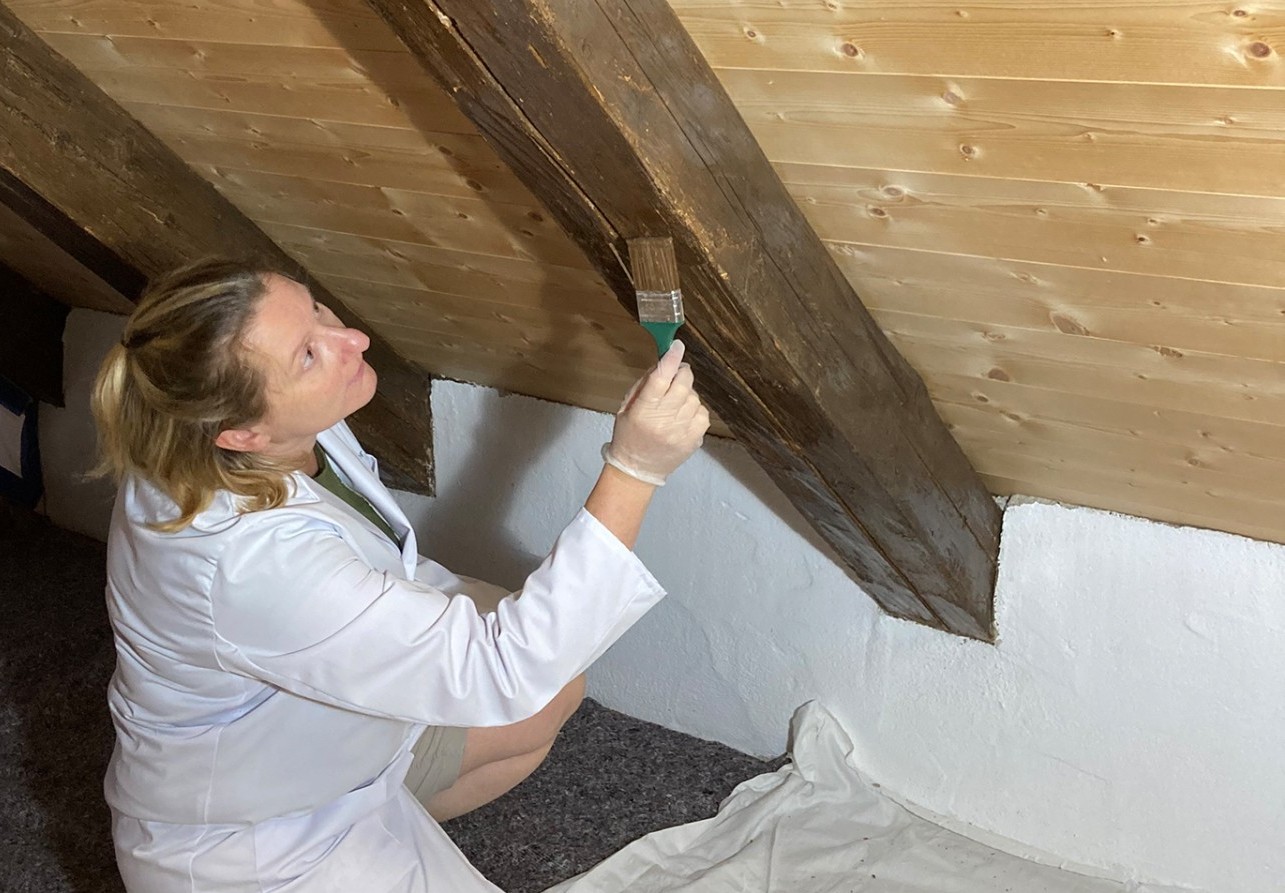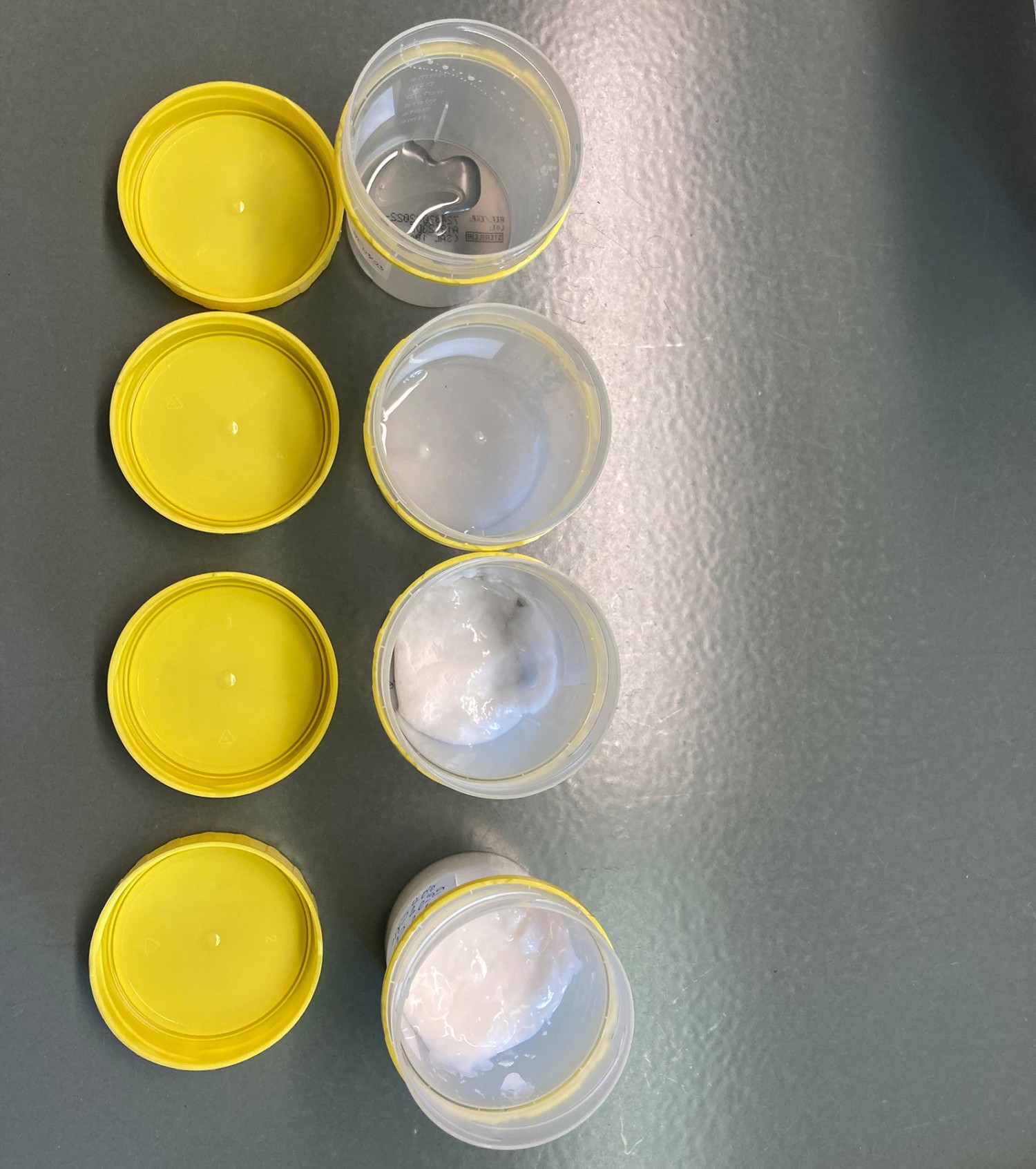Teaser image source: Fraunhofer IBP
If wood preservatives such as pentachlorophenol and lindane have to be made harmless during the regeneration process, this is expensive. In addition, corresponding measures may conflict with requirements for the protection of monuments. A team from the German Fraunhofer Institute wants to change that using CycloPlasma technology.
Source: Yogesh Pedhamkar, Unsplash
PCP or lindane may also be found in previously restored packages. (icon image)
It has now entered into force in 2004 Stockholm Agreement 152 countries signed. In doing so, they pledge to restrict or prohibit the production and use of persistent organic pollutants (POP). These substances also include pentachlorophenol and lindane, which were used as wood preservatives between the 1950s and 1980s. Pentachlorophenol is considered a carcinogen and is also believed to have a negative effect on fertility. Anyone with extensive or regular exposure to lindane risks damage to the central nervous system. Lindane is also suspected to be a carcinogen. (More on this in the PDF file from www.holzbau-schweiz.ch)
Today, PCP and lindane have been banned – in Switzerland since 1989, as well as in Germany. However, the danger of toxic substances has not yet been completely avoided: it is possible to find them in historical buildings and old buildings. Because disposal costs are high and also because corresponding renovations can conflict with monument conservation requirements, their removal is often difficult. A research team from Germany's Fraunhofer Institute for Building Physics (IBP) wants to change this: Using its “CycloPlasma” technology, dangerous pollutants can be removed “without residue and without loss of matter” in an environmentally friendly way, according to a press release. The researchers combined adsorption technology to remove wood toxins with a plasma process to clean indoor air of pollutants that had already escaped.
This will be done first Cyclodextrin (CD) Applied as a gel to contaminated wood. CDs can capture and bind contaminants such as lindane and PCP. They were discovered a hundred years ago and are used, for example, to treat soil contaminated with heavy metals or oil.

Source: Fraunhofer IBB
Andrea Burdak-Freitag applied the cyclodextrin recipe to a contaminated wooden beam.
The CD gel developed at IBP is colorless, does not change the structure of the wood, and cannot be seen on the wood surface, according to the scientists. In addition, it is non-mildew, non-toxic, washable and biodegradable. “The formula seeps into the pores of the wood, where it absorbs contaminants like a sponge,” explains Andrea Burdak-Freitag of IBP, who developed the gel with her team. “Depending on the concentration of contaminants, they remain bound to the CD layer.”
However, if there are many toxic substances in the wood, it will not be able to fully absorb the gel and some of it will end up in the room air. The plasma device fills this gap: it absorbs harmful substances and renders them harmless. “The electrodes in the housing generate a plasma gas through which the air flow containing pollutants is drawn. Plasma gas chemically breaks down lindane and pentachlorophenol. In addition, activated carbon filters prevent gaseous decomposition products from escaping from the device.
Tests on the attic of a historic mill
After successfully completing laboratory tests, the technology is being tested at the Glintleiten Open-Air Museum in Upper Bavaria: The “CycloPlasma” technology is currently being tested with large-scale measurements in the attic of the historic Thürlmühle Hotel. “Especially in the roof supports of historic buildings and exhibits of museum collections, there are often dangerous contaminants from wood preservatives that were previously used to preserve cultural assets for as long as possible,” Ralph Kilian of Cultural Heritage Research was quoted as saying. Fraunhofer Institute press release.

Source: Fraunhofer IBB
As Burdak-Freitag explains, cyclodextrins are ring-shaped dextrose molecule chains obtained enzymatically from starch. The ring structures made of sugar chains surround lindane and PCP in a cavity and thus completely encapsulate them.
While the pollutants present have been completely analyzed in the laboratory, the concentration of pollutants in Thürlmühle has so far dropped to only a third of the original concentration. However, according to the Fraunhofer Institute, in previous tests the gel was only applied thinly to visible wood surfaces. It is said that if the glaze is applied thicker, the concentration of contaminants can be reduced further.
In addition, the IBP team is now conducting a long-term experiment to determine how long the CD layer remains stable and whether no contaminants escape over the long term. In addition, tests have begun with combined adsorption and plasma technology. Other attempts use compresses soaked in CD gel that are wrapped around the rafters and later removed – a classic restoration technique.
Adsorption and plasma technology can be combined depending on the amount of pollutants and the size of the room. “The restoration procedures are carried out on an almost standard basis. We have patented our recipe for the renovation and construction sector. It is also possible to restore wooden furniture and wooden objects,” says Burdak-Freitag. According to the researchers, the solution may also be suitable for other building materials such as concrete and screed. However, tests with potential industrial partners are still pending. (maybe)
Read the article from the Fraunhofer Institute here: www.fraunhofer.de

“Certified tv guru. Reader. Professional writer. Avid introvert. Extreme pop culture buff.”






More Stories
Meta: New AI-powered advertising tools for more success in the reels
When Lilli and husband D do the work
AI Startup: Here are eight startup ideas